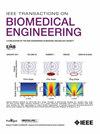A Novel Deep Ensemble Method for Selective Classification of Electrocardiograms
IF 4.4
2区 医学
Q2 ENGINEERING, BIOMEDICAL
引用次数: 0
Abstract
用于心电图选择性分类的新型深度集合方法
目的:远程医疗模式对于远程管理慢性病患者至关重要。为了帮助临床医生处理通过这些系统收集到的大量数据,人们开发了临床决策支持系统(CDSS)。然而,临床决策支持系统的有效性取决于远程记录的生理数据的质量和用于处理这些数据的算法的可靠性。本研究旨在从无监督远程医疗环境下获得的短期单导联(STSL)心电图记录中可靠地检测出心房颤动(AF):方法:开发了一种基于深度集合的新方法,用于从 STSL 心电图记录中检测房颤。随后,创建了一种后处理算法,用于评估已分类时时彩注册送48心电图的不确定性,并在置信度较低时避免解释。通过在 2017 年心脏病学挑战赛(CinC2017)数据集上进行 5 倍交叉验证,对所提出的方法进行了验证:深度集合方法在房颤检测中的灵敏度为 83.5 ± 1.5%,特异度为 98.4 ± 0.2%,F 1 分数为 0.847 ± 0.016。采用选择性分类算法后,灵敏度提高到 92.8 ± 2.2%,特异性提高到 99.7 ± 0.0%,F 1 分数为 0.919 ± 0.016:所提出的方法证明了从 STSL 心电图记录中准确检测房颤的可行性。选择性分类方法大大增强了远程医疗解决方案中的自动心电图解读算法:这些研究结果凸显了通过整合能够管理不确定性和确保更高精度的先进 CDSS 来提高远程医疗系统实用性的潜力,从而改善远程医疗环境中患者的治疗效果。
本文章由计算机程序翻译,如有差异,请以英文原文为准。
求助全文
约1分钟内获得全文
求助全文
来源期刊

IEEE Transactions on Biomedical Engineering
工程技术-工程:生物医学
CiteScore
9.40
自引率
4.30%
发文量
880
审稿时长
2.5 months
期刊介绍:
IEEE Transactions on Biomedical Engineering contains basic and applied papers dealing with biomedical engineering. Papers range from engineering development in methods and techniques with biomedical applications to experimental and clinical investigations with engineering contributions.
 求助内容:
求助内容: 应助结果提醒方式:
应助结果提醒方式:


